 W
WThe anal sulcus, also called the anal sinus or anal canal, in Gastropods is a notch, a shelly tube at the top of the aperture. It is the first notch close to the suture. It houses the anal siphon through which the snail expels water and waste products.
 W
WThe aperture is an opening in certain kinds of mollusc shells: it is the main opening of the shell, where the head-foot part of the body of the animal emerges for locomotion, feeding, etc.
 W
WThe caudal mucous pit, or caudal mucous horn, is an anatomical structure on the tail end of the foot of various land snails and slugs, terrestrial pulmonate gastropod mollusks.
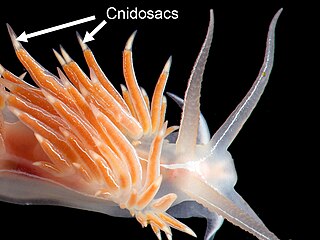 W
WCerata, singular ceras, are anatomical structures found externally in nudibranch sea slugs, especially in aeolid nudibranchs, marine opisthobranch gastropod mollusks in the clade Aeolidida. The word ceras comes from the Greek word "κέρας", meaning "horn", a reference to the shape of these structures.
 W
WAs in other molluscs, the circulatory system of gastropods is open, with the fluid, or haemolymph, flowing through sinuses and bathing the tissues directly. The haemolymph typically contains haemocyanin, and is blue in colour.
 W
WA cnidosac is an anatomical feature that is found in the group of sea slugs known as aeolid nudibranchs, a clade of marine opisthobranch gastropod molluscs. A cnidosac contains cnidocytes, stinging cells that are also known as cnidoblasts or nematocysts. These stinging cells are not made by the nudibranch, but by the species that it feeds upon. However, once the nudibranch is armed with these stinging cells, they are used in its own defense.
 W
WThe columella or pillar is a central anatomical feature of a coiled snail shell, a gastropod shell. The columella is often only clearly visible as a structure when the shell is broken, sliced in half vertically, or viewed as an X-ray image.
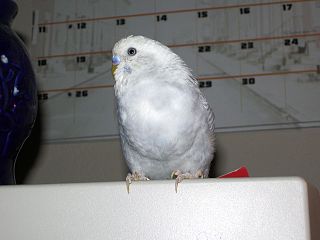 W
WA crop is a thin-walled expanded portion of the alimentary tract used for the storage of food prior to digestion. This anatomical structure is found in a wide variety of animals. It has been found in birds, and in invertebrate animals including gastropods, earthworms, leeches, and insects.
 W
WA ctenidium is a respiratory organ or gill which is found in many mollusks. This structure exists in bivalves, cephalopods, Polyplacophorans (chitons), and in aquatic gastropods such as freshwater snail and marine snails. Some aquatic gastropods possess one ctenidium known as monopectinate and others have a pair of ctenidia known as bipectinate.
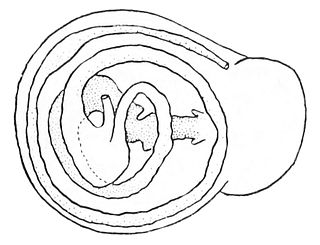 W
WThe digestive system of gastropods has evolved to suit almost every kind of diet and feeding behavior. Gastropods as the largest taxonomic class of the mollusca are very diverse indeed: the group includes carnivores, herbivores, scavengers, filter feeders, and even parasites.
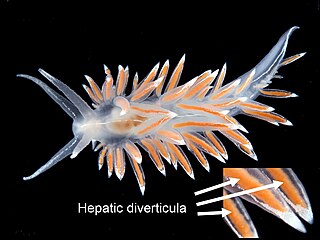 W
WAs applied to mollusks, the New Latin term diverticulum is an anatomical feature. The term is most often encountered in the plural form as "diverticula", "hepatic diverticula", or "digestive diverticula", which are anatomical terms for organs which are visible from the outside of the body in a clade of sea slugs known as aeolid nudibranchs, marine opisthobranch gastropod molluscs.
 W
WAn epiphragm is a temporary structure which can be created by many species of shelled, air-breathing land snails, terrestrial pulmonate gastropod mollusks. It can also be created by freshwater snails when temporary pools dry up.
 W
WEuthyneury is a plesiomorphic condition present in some gastropods which is a result of two evolutionary events. The first event, which was experienced by the ancestors of all extant gastropods, is known as torsion. Torsion describes the event in which the intestines, heart, nephridia, gills, and nerve cords "twisted" causing some organs to migrate from the animal's left to its right in order to accommodate the relocation of the mantle cavity close to the animal's head. Torsion created a condition in the cerebrovisceral commissures called streptoneury. Secondarily, some gastropod lineages detorted: they reversed the torsion event and straightened out their internal organs, uncrossing the commissures in the process. It is this second state, one in which the commissures have once again become untwisted, that is called euthyneury.
 W
WThe excretory system of gastropods removes nitrogenous waste and maintains the internal water balance of these creatures, commonly referred to as snails and slugs. The primary organ of excretion is a nephridium.
 W
WThe gastropod shell is part of the body of a gastropod or snail, a kind of mollusc. The shell is an exoskeleton, which protects from predators, mechanical damage, and dehydration, but also serves for muscle attachment and calcium storage. Some gastropods appear shell-less (slugs) but may have a remnant within the mantle, or the shell is reduced such that the body cannot be retracted within (semi-slug). Some snails also possess an operculum that seals the opening of the shell, known as the aperture, which provides further protection. The study of mollusc shells is known as conchology. The biological study of gastropods, and other molluscs in general, is malacology. Shell morphology terms vary by species group. An excellent source for terminology of the gastropod shell is "How to Know the Eastern Land Snails" by John B. Burch now freely available at the Hathi Trust Digital Library.
 W
WHancock's organ is a lateral sensory organ of gastropods, a sense organ found in some sea snails. This organ is found in most of the shelled opisthobranchs.
 W
WThe hepatopancreas, digestive gland or midgut gland is an organ of the digestive tract of arthropods and molluscs. It provides the functions which in mammals are provided separately by the liver and pancreas, including the production of digestive enzymes, and absorption of digested food.
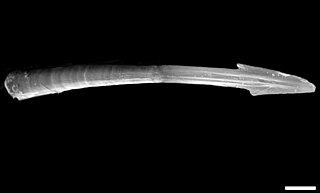 W
WA love dart is a sharp, calcareous or chitinous dart which some hermaphroditic land snails and slugs create. Love darts are both formed and stored internally in a dart sac. These darts are made in sexually mature animals only, and are used as part of the sequence of events during courtship, before actual mating takes place. Darts are quite large compared to the size of the animal: in the case of the semi-slug genus Parmarion, the length of a dart can be up to one fifth that of the semi-slug's foot.
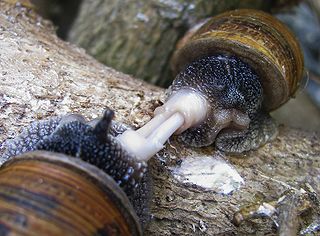 W
WThe mating of gastropods is a vast and varied topic, because the taxonomic class Gastropoda is very large and diverse, a group comprising sea snails and sea slugs, freshwater snails and land snails and slugs. Gastropods are second only to the class Insecta in terms of total number of species. Some gastropods have separate sexes, others are hermaphroditic. Some hermaphroditic groups have simultaneous hermaphroditism, whereas some sequential hermaphroditism. In addition, numerous very different mating strategies are used within different taxa.
 W
WThe nervous system of gastropods consists of a series of paired ganglia connected by major nerve cords, and a number of smaller branching nerves.
 W
WNidamental glands are internal organs found in some elasmobranchs and certain molluscs, including cephalopods and gastropods.
 W
WThe odontophore is part of the feeding mechanism in molluscs. It is the cartilage which underlies and supports the radula, a ribbon of teeth. The radula is found in every class of molluscs except for the bivalves.
 W
WThe operculum, meaning little lid, is a corneous or calcareous anatomical structure like a trapdoor which exists in many groups of sea snails and freshwater snails, and also in a few groups of land snails; the structure is found in some marine and freshwater gastropods, and in a minority of terrestrial gastropods, including the families Helicinidae, Cyclophoridae, Aciculidae, Maizaniidae, Pomatiidae, etc.
 W
WIn invertebrates, the term parapodium refers to lateral outgrowths or protrusions from the body. Parapodia are predominantly found in annelids, where they are paired, un-jointed lateral outgrowths that bear the chaetae. In several groups of sea snails and sea slugs, 'parapodium' refers to lateral fleshy protrusions.
 W
WA parietal callus is a feature of the shell anatomy of some groups of snails, i.e. gastropods. It is a thickened calcareous deposit which may be present on the parietal wall of the aperture of the adult shell. The parietal wall is the margin of the aperture and part of the wall of the body whorl that is closest to the columella. The callus is often smooth and glossy, but can also be decorated with raised ribs or wrinkles.
 W
WA plait is an anatomical feature which is present the shells of some snails, or gastropods. This sculpture occurs often in the shells of marine gastropod mollusks in the clade Neogastropoda, but it is also found in some pulmonate land snails.
 W
WThe pneumostome or breathing pore is a respiratory opening of the external body anatomy of an air-breathing land slug or land snail. It is a part of the respiratory system of gastropods.
 W
WThe reproductive system of gastropods varies greatly from one group to another within this very large and diverse taxonomic class of animals. Their reproductive strategies also vary greatly, see Mating of gastropods.
 W
WA rhinophore is one of a pair of chemosensory club-shaped, rod-shaped or ear-like structures which are the most prominent part of the external head anatomy in sea slugs, marine gastropod opisthobranch mollusks such as the nudibranchs (Nudibranchia), Sea Hares, (Aplysiomorpha) and sap-sucking sea slugs (Sacoglossa).
 W
WA selenizone is an anatomical structure that exists in the shells of some families of living sea snails: the slit shells, the little slit shells and the abalones, which are marine gastropod mollusks from ancient lineages.
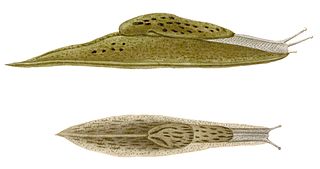 W
WSemi-slugs, also spelled semislugs, are land gastropods whose shells are too small for them to retract into, but not quite vestigial. The shell of some semi-slugs may not be easily visible on casual inspection, because the shell may be covered over with the mantle.
 W
WA siphon is an anatomical structure which is part of the body of aquatic molluscs in three classes: Gastropoda, Bivalvia and Cephalopoda.
 W
WThe siphonal canal is an anatomical feature of the shells of certain groups of sea snails within the clade Neogastropoda. Some sea marine gastropods have a soft tubular anterior extension of the mantle called a siphon through which water is drawn into the mantle cavity and over the gill and which serves as a chemoreceptor to locate food. In certain groups of carnivorous snails, where the siphon is particularly long, the structure of the shell has been modified in order to house and protect the soft structure of the siphon. Thus the siphonal canal is a semi-tubular extension of the aperture of the shell through which the siphon is extended when the animal is active.
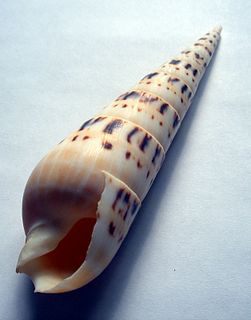 W
WA siphonal notch is a feature of the shell anatomy in some sea snails, marine gastropod mollusks.
 W
WSlug, or land slug, is a common name for any apparently shell-less terrestrial gastropod mollusc. The word slug is also often used as part of the common name of any gastropod mollusc that has no shell, a very reduced shell, or only a small internal shell, particularly sea slugs and semislugs.
 W
WSnail slime is a kind of mucus, an external bodily secretion, which is produced by snails, which are gastropod mollusks. Land snails and slugs both produce mucus, as does every other kind of gastropod, from marine, freshwater, and terrestrial habitats. The reproductive system of gastropods also produces mucus internally from special glands.
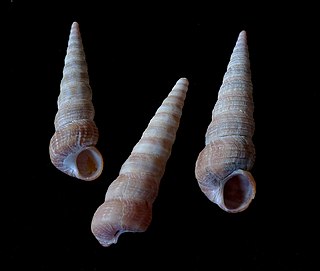 W
WA spire is a part of the coiled shell of molluscs. The spire consists of all of the whorls except for the body whorl. Each spire whorl represents a rotation of 360°. A spire is part of the shell of a snail, a gastropod mollusc, a gastropod shell, and also the whorls of the shell in ammonites, which are fossil shelled cephalopods.
 W
WStreptoneury or chiastoneury is a plesiomorphic condition present in all gastropods which is a result of an evolutionary event called torsion in which the intestines, heart, nephridia, gills, and nerve cords "twist" causing some organs to migrate from the animal's left to its right in order to accommodate the relocation of the mantle cavity close to the animal's head. Specifically, streptoneury is the crossing of the cerebrovisceral connectives caused by this torsion.
 W
WThe stromboid notch is an anatomical feature which is found in the shell of one taxonomic family of medium-sized to large sea snails, the conches.
 W
WA style, sometimes referred to as a crystalline style, is a rod made of glycoprotein located in the midgut of most bivalves and some gastropods which aids in extracellular digestion. It consists of a protein matrix coated with digestive enzymes secreted by the style sac in the animal's stomach. When feeding, its projecting end is scraped against the stomach wall and abraded, thus releasing the enzymes.
 W
WThe suprapedal gland or mucous pedal gland is an anatomical feature found in some snails and slugs. It is a gland located inside the front end of the foot of gastropods.
 W
WA varix is an anatomical feature of the shell of certain sea snails, marine gastropod molluscs. Gastropods whose shells have varices are primarily families and species within the taxonomic groups Littorinimorpha and Neogastropoda.
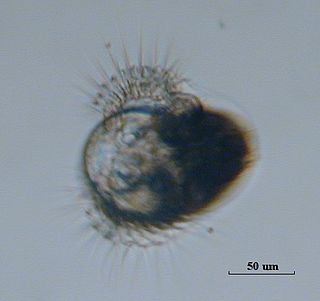 W
WA veliger is the planktonic larva of many kinds of sea snails and freshwater snails, as well as most bivalve molluscs (clams) and tusk shells.